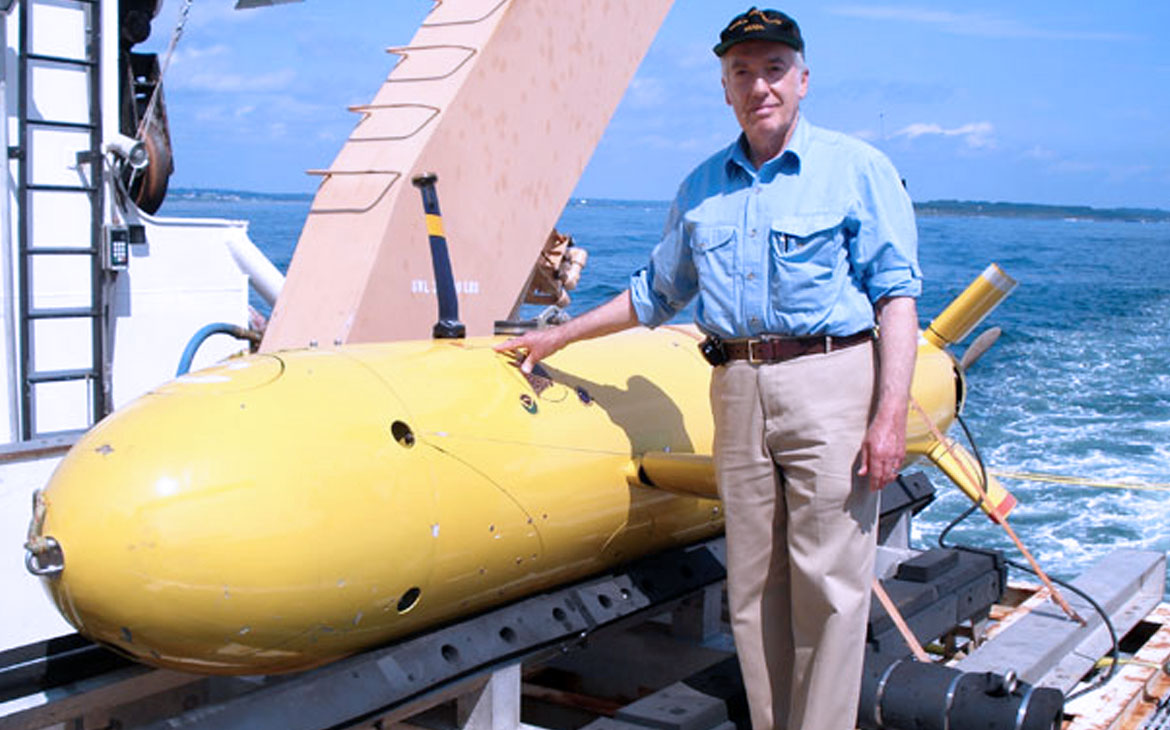Peter A. Rona, an oceanographer who dived into the depths of the world’s seas and surprised his peers by discovering vast mounds spewing hot smoke at the bottom of the icy Atlantic, exciting interests in deep-sea mining and the origins of life on earth, died on Feb. 20 in Plainsboro, N.J. He was 79.
The cause was complications related to multiple myeloma, according to Rutgers University, where Dr. Rona was a professor of earth and planetary sciences.
Fascinated by the mysteries of what he called “the last frontier on earth,” Dr. Rona specialized in exploring the dark abyss for more than a half-century, starting around 1960. He dived in miniature submarines dozens of times, led scientific expeditions, wrote hundreds of papers, published an atlas of the central North Atlantic seabed and served as a consultant to the United Nations on seafloor mineral resources.
He knew failure as well: His decades-long effort to find one of the earth’s oldest living fossils on the seabed proved ultimately fruitless.
A major success came in 1985, when he led the expedition that discovered hot springs and their associated life-forms in the deep Atlantic. He and his colleagues showed that the Mid-Atlantic Ridge, a craggy seam between tectonic plates that bisect the Atlantic, boiled with hot jets that hosted communities of animals that had been unknown to science.
The hot springs proved to be of immense importance. High concentrations of gold, silver and other precious metals lace their rocky underpinnings, offering mining interests the prospect of vast riches. In recent years, the discoveries have set off a gold rush among nations, companies and entrepreneurs, all looking to stake claims. Prospectors have hauled up samples in assessing the deposits, valued at trillions of dollars.
In addition, scientists have theorized that the veiled sites of undersea heat acted as gentle incubators for the creation of the first crude forms of life on earth billions of years ago.
Dr. Rona wrote about the hot-springs discovery in National Geographic magazine in October 1992, saying the rising currents “shimmered like heat waves on desert sand.”
From 1999 to 2003, he and his colleague Richard A. Lutz served as science advisers to “Volcanoes of the Deep Sea,” an IMAX film that took viewers down to the hot springs of the Atlantic and Pacific Oceans. Globally, the film has been seen by 165 million people.
The film also featured Dr. Rona’s long hunt for the living fossil, an organism a bit larger than a poker chip. Its ancestors, known as Paleodictyon nodosum, were some of the planet’s earliest forms of complex life.
The search began after Dr. Rona, in exploring the Atlantic seabed, spotted a dense series of small holes arranged in a six-sided pattern. The evidence he then gathered in a series of dives suggested that one of the world’s oldest living fossils, perhaps the oldest, had formed thousands of the strange hexagonal patterns.
Repeatedly, Dr. Rona tried to capture living specimens of the organism. He would lower a hollow plastic tube over a hexagonal spot and scoop up a thick core of seabed mud. But detailed inspections of the muck never revealed anything of significance — no body parts, no biological fibers, no DNA.
Peter Arnold Rona was born in Trenton on Aug. 17, 1934.
“I was one of those kids who collected rocks and minerals, climbed mountains, loved the outdoors and identified with geology,” he told a Rutgers publication.
He graduated with a bachelor’s degree in geology from Brown University in 1956 and a master’s in geology from Yale in 1957. He worked for the Standard Oil Company from 1957 to 1959, exploring the American Southwest for promising sites.
In December 1958, while visiting his family in Manhattan for the holidays, he met oceanographers who had moored their research vessels to West Side piers. The scientists, in New York for a meeting, spoke of a vast new world under the sea.
He went back to school, doing research on oceanographic gear at Columbia University, and in 1967, he received a Ph.D. in marine geology and geophysics from Yale.
Soon, Dr. Rona was exploring the deep Atlantic for the National Oceanographic and Atmospheric Administration. He used dredges, cameras and echo sounders that mapped the seabed, and it was while doing that work that he found the hot springs.
In 1987, the Commerce Department awarded him its gold medal for exceptional scientific contributions to the nation. He joined Rutgers in 1994 and taught oceanography.
Dr. Rona’s wife of more than 40 years, Donna, died in 2013. He is survived by his daughter, Jessica.
Once asked by a reporter if his long hunt for the living fossil ever frustrated him, Dr. Rona replied with relaxed aplomb. “It’s science,” he said as he puttered in his laboratory. “It’s detective work. It’s about racking up one clue after another.”
Article Credit: https://www.nytimes.com

